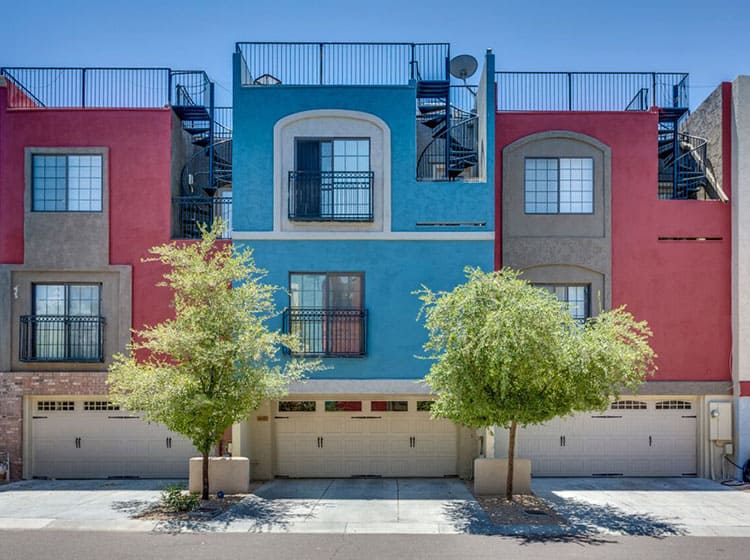Comprehensive Instructions For Ready-Making Your Walls For Repainting
Comprehensive Instructions For Ready-Making Your Walls For Repainting
Blog Article
Write-Up Produced By-Binderup Dillard
When you're prepping your wall surfaces for painting, it's essential to adhere to a systematic procedure to guarantee a perfect finish. Start by examining the wall surface for any kind of damage; this step can make or break your task. Once you have actually identified any kind of issues, cleaning the surface area properly is vital, as an unclean wall can influence paint attachment. After that, you'll require to spot any blemishes and use a guide. But there are Visit Homepage and pointers that can elevate your prep work game-- let's discover those more to attain the best results.
Assessing Wall Surface Condition
Before you order your paintbrush, take a minute to analyze your walls' condition. Check for any visible damage like cracks, openings, or peeling off paint. These imperfections can affect just how the paint sticks and looks when it's dry. If you notice any substantial damages, you'll need to focus on repair work prior to diving right into paint.
Look very closely at the texture of your wall surfaces. Is the surface area smooth, or exists appearance that might need special consideration? Smooth wall surfaces normally need much less preparation, while textured surfaces might require even more time to paint equally.
Additionally, take into consideration the previous paint task. If the old paint is glossy, it mightn't enable brand-new paint to stick correctly. You'll want to know if your walls have been repainted with oil-based or water-based paint, as this can affect your selection of primer or paint.
Lastly, take kitchen cabinet painting vancouver wa of any kind of dampness issues. If you see indicators of water damages or mold and mildew, address these issues right away to prevent further difficulties.
Cleaning up the Surface
As soon as you have actually analyzed the problem of your walls, the following step is cleaning the surface. Beginning by collecting your materials: a bucket, cozy water, a moderate detergent, a sponge or cloth, and a scrub brush for tougher spots.
Begin on top edge of the wall and function your method down. Mix the cleaning agent with warm water in your bucket, then dip the sponge or cloth into the option. Wring it out to stay clear of excessive wetness on the walls.
As you cleanse, pay attention to areas that could've collected dirt, oil, or fingerprints. For persistent spots, make use of the scrub brush carefully to prevent damaging the paint underneath. Wash your sponge or cloth frequently in tidy water to stop spreading out dirt around.
After cleansing, it's vital to wipe the walls with a moist fabric to remove any type of soap deposit. This step makes sure a smooth surface for the new paint to abide by.
Permit the wall surfaces to dry entirely before carrying on to the next preparation actions. This extensive cleansing procedure will aid create a fresh canvas for your painting project, making certain the very best outcomes.
Patching and Priming
Patching and priming are essential action in preparing your walls for a fresh coat of paint. Initially, evaluate your wall surfaces for any kind of openings, splits, or imperfections. Make use of a high-quality spackling substance or patching paste to fill up these areas.
Apply Read Home Page with a putty knife, smoothing it out so it's flush with the surrounding surface. Allow it to dry totally, and afterwards sand it lightly until it's smooth and even.
When you have actually patched every little thing, it's time to prime. Guide aids seal the covered areas, making sure the paint adheres properly and offers an uniform finish. Pick a primer appropriate for your wall kind and the paint you'll be utilizing.
Apply the primer using a roller for bigger locations and a brush for corners and edges. If your patched areas are dramatically big or permeable, you might wish to apply a second layer of primer after the very first one dries.
After priming, let whatever completely dry completely prior to proceeding to painting. This prep work will not just improve the appearance of your wall surfaces but likewise extend the life of your paint task.
Take your time, and you'll be pleased with the outcomes.
Conclusion
By adhering to these simple steps, you can achieve a smooth and professional coating on your wall surfaces. Begin by examining their problem, then clean and patch any kind of blemishes prior to applying guide. Remember to permit sufficient drying time and ensure every little thing is smooth before you dive into paint. With the right preparation, you'll establish the stage for an attractive improvement in your area. Now, collect your materials, take in the fresh air, and get ready to repaint!
